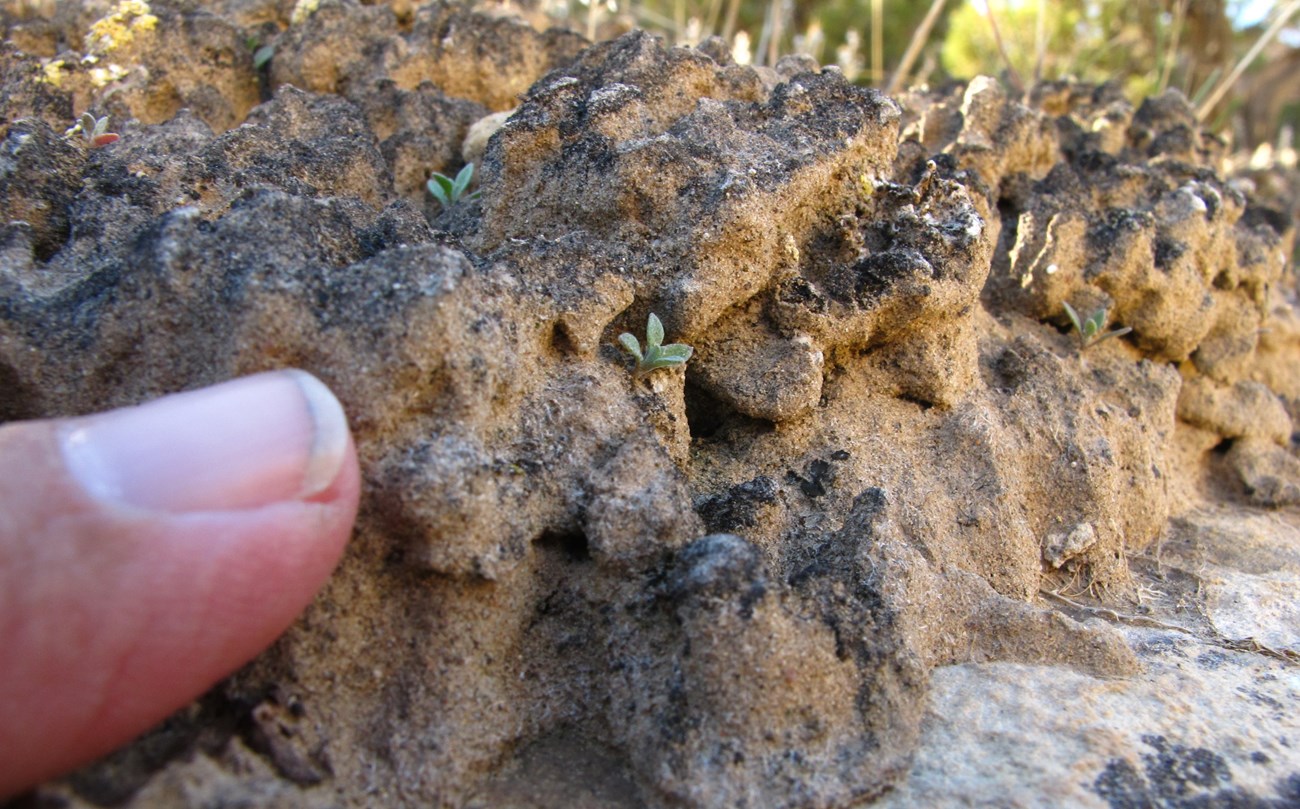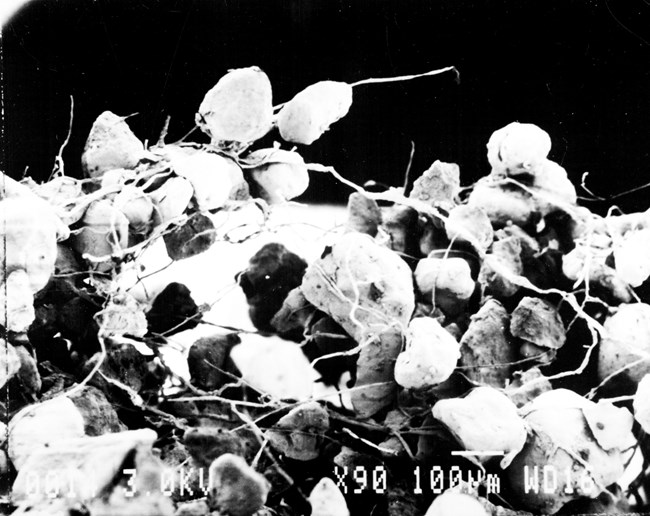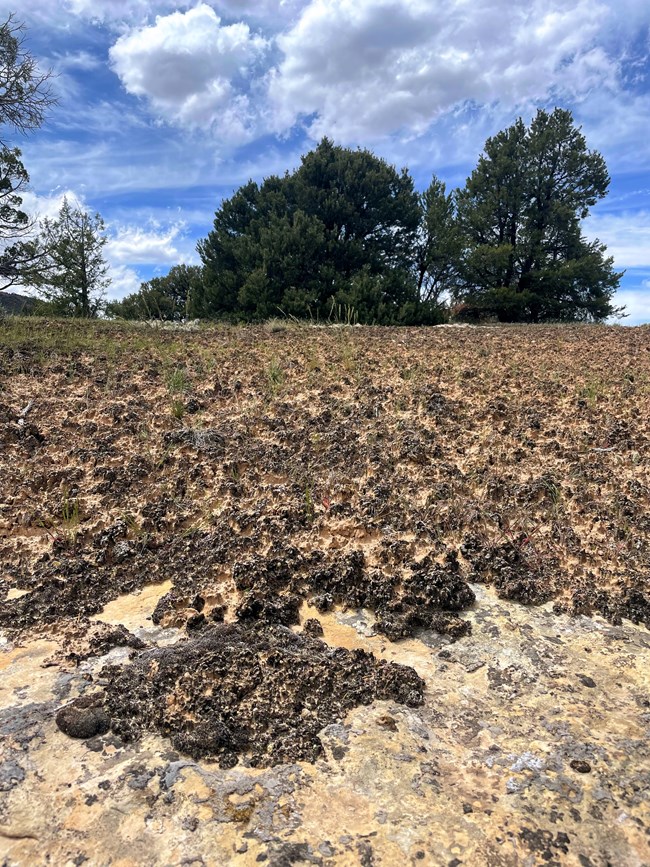
NPS / Cindy McIntyre Living DirtIn the spaces between trees, shrubs, and the rest of the low-lying plants in Dinosaur's arid landscapes, a dark, bumpy surface covers much of the ground. While it looks like dirt (and it is dirt) it's also much more than that. This is biological soil crust. Hidden within this rough soil is a living community of tiny organisms that includes cyanobacteria, microfungi, lichen, mosses, and their biproducts. These tiny living things are too small to see with the naked eye, but they work together to bind inorganic soil particles. The result is a crusty surface that improves water absorption, resists erosion, and provides a healthy surface for plants to take root and grow. Biological soil crust can be found in many arid environments all over the world, from the arctic to the high deserts of the Colorado Plateau, where Dinosaur National Monument resides. In fact, over 70% of all living ground cover is soil crust.
NPS / Arches National Park Benefits of Biological Soil CrustsBiological soil crusts are made up of many tiny things, including microfungi, lichen, mosses, algae, and bryophytes. But the main element that produces energy is cyanobacteria. Cyanobacteria is a large phylum of bacteria that obtains energy through photosynthesis. It's thought to be one of Earth's oldest lifeforms. It exists almost everywhere -- in the oceans, in the air, even in Yellowstone's colorful hot springs. In soil crusts, cyanobacteria tends to produce long filaments. These filaments have a sticky quality that binds the soil particles in strong net-like structure. It's this structure that helps to reduce or even completely eliminate the soil's erosion by wind and water. As the filaments grow and wind through the ground, they also create pathways for water and nutrients to travel, an important feature in places like Dinosaur that recieve little annual rainfall.In addition to stability, the presence of living organisms in soil crusts adds numerous other benefits. Because they're photosynthetic, they contribute carbon to the soil. They also posess qualities that help to make nitrogen and phosphorous more available to plants that grow in the soil. Ecologists have found that areas with healthy soil crusts also show improved soil health. To learn more about the benefits of soil crusts, click here. 
Don't Bust the Crust!Visitors are always welcome to bust a move at Dinosaur National Monument... just don't bust the crust while you're at it. The picture to the right shows a large patch of biological soil crust in Dinosaur National Monument. Note the foreground where the the dark, knobby soil crusts give way to durable, bare rock.Biological soil crusts are extremely delicate, and can be easily crushed by a foot, tire, or anything set down upon it. Once the crust is busted, it can take many years to restore itself, sometimes even multiple decades. In the meantime, the ground where the soil crust once was is unable to retain water as efficiently. Native plants have a hard time taking root in the loose sand, giving nonnative plants the opportunity to overtake the area. This has cascading effects through the ecosystem, since many animals cannot ingest nonnative plants and are unlikely to enter areas where they've taken over. If you choose to dance (or hike) in the park, please do so on durable surfaces like rocks, concrete, or even sand or dirt. Pro Tip: If you wish to bust a move at Dinosaur, be sure to find a durable surface like bare rock or concrete. If you work some dinosaur poses into your dance, you can mark off the "Pose Like A Dinosaur" activity in your Junior Ranger book and be one step closer to earning your badge! |
Last updated: April 18, 2025
